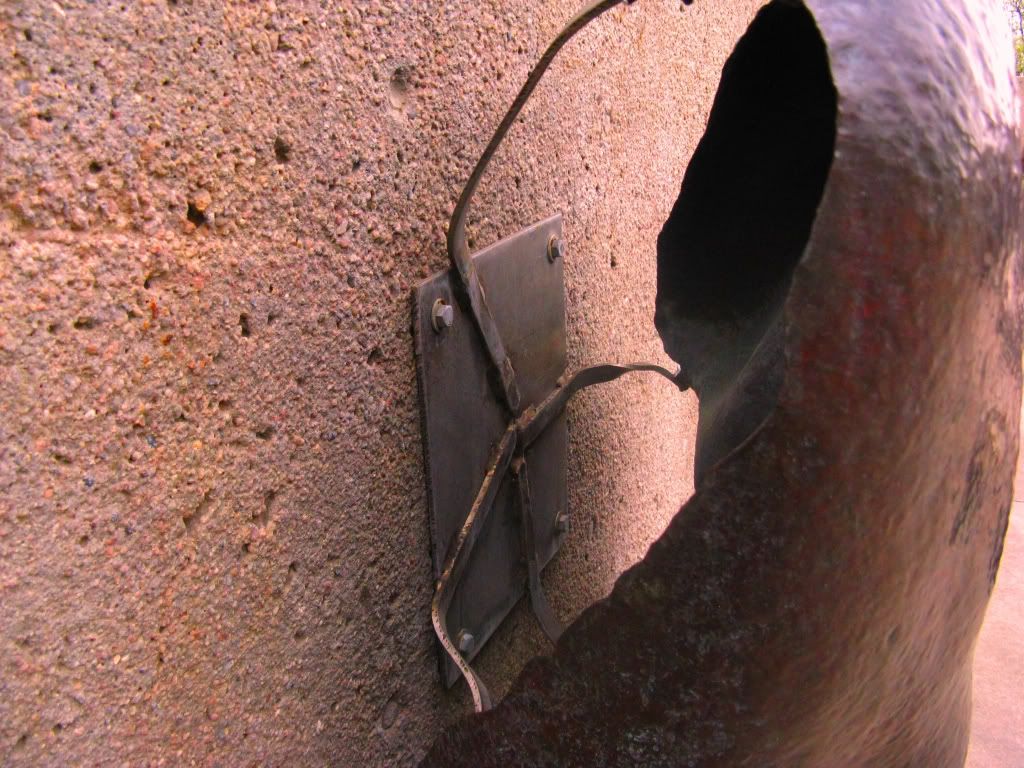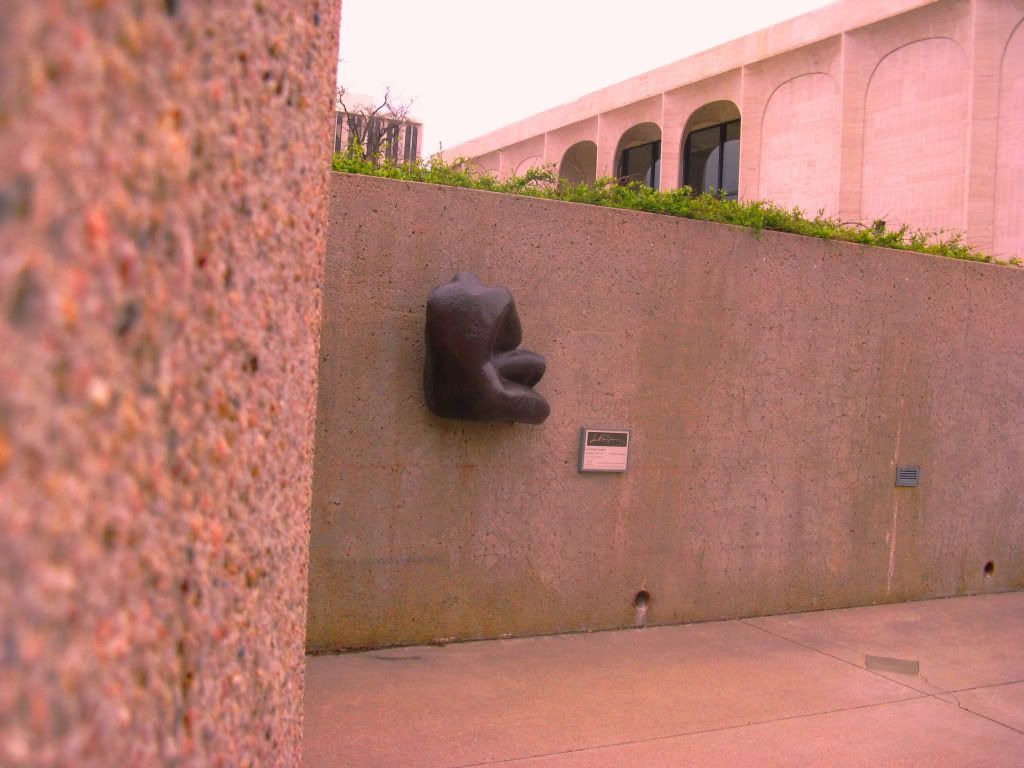Author's Note
Early when class started and we found ourselves outside the Sheldon, I remember that the class started talking about this project before our instructor even arrived. Many had already done their research and had some idea of what the project was. There were rumors of writing letters to statues, then embracing them or doing something else equally ridiculous.
We all hoped that was what it would be. And thus it became.
I jumped on the chance to do this second option, because not only was I running a little dry on rhetorical terms, but I really wanted the ability to be creative and to perform. I used to act in my high school for a while, but I've been out of the circuit for about two years, so I decided I could use this as an outlet. Write up a witty and inspiring work of prose, then over-dramatize it for the rest of the class. Perfect.
Now it's done, and I'm quite pleased with it. Many improvements were made from the first draft, its size more than doubled and I really worked to address the points I had failed to bring up about Serenity. I had taken so much time to research and get to know this structure, I really worked to artfully inject as much of that as possible, and I believe it shows through.
The final stage now is the performance. Dressing like a good Proletarian, I will read the letter aloud for the enjoyment of my peers and the improvement of my grade, yes, but more importantly to address my new friend, Saul Baizerman's Serenity.
Man, I hope he enjoys it!
Final Draft
To Serenity, my dear friend,
 Your dark, rough-hewn metal, protective stance, and mangled body told me, first, a tale of woe and sadness. All I could see was a beaten figure, retracting from the world to shelter it's very soul. Your head, now lost from your body, would have driven itself through these stones, if only to escape, if only to find...
Your dark, rough-hewn metal, protective stance, and mangled body told me, first, a tale of woe and sadness. All I could see was a beaten figure, retracting from the world to shelter it's very soul. Your head, now lost from your body, would have driven itself through these stones, if only to escape, if only to find...
It has been many weeks now that we have spent together, truly working to get to know one another. So I must tell you all of the things I have learned about you, all that you have inspired, in this time.
Serenity, the first days I saw you, I was merely walking past, on my way to do any number of errands about the grounds in which you reside. You caught my eye, then, with your hunched figure holding desperately to that wall. I dared not come closer, lest I disturb you, but I knew somehow we must meet.
Thus, I sprung at the chance to join you, dive into your soul and find what you and Saul had to offer about the world. We have spent many long hours together, talking, listening, watching, just simply being together most of the time, but it has all been truly enjoyable, an insightful experience, to be sure.
 Your dark, rough-hewn metal, protective stance, and mangled body told me, first, a tale of woe and sadness. All I could see was a beaten figure, retracting from the world to shelter it's very soul. Your head, now lost from your body, would have driven itself through these stones, if only to escape, if only to find...
Your dark, rough-hewn metal, protective stance, and mangled body told me, first, a tale of woe and sadness. All I could see was a beaten figure, retracting from the world to shelter it's very soul. Your head, now lost from your body, would have driven itself through these stones, if only to escape, if only to find...Serenity.
As I traced your form, I noticed its rough exterior. Your skin is almost abrasive, and I see the wear of the world in it. All about you, here, is dust and grime. The skin has turned green, here, oxidized by the wind and the rain. Your naturally dull color has only muted further through these layers of dirt. Who's intent was this, dear friend? Were you meant to stand here and weather the elements unattended, or have you simply been forgotten and mistreated? Shall I take something from this seeming lack of care, or shall I walk through those doors and demand that you are tended, cleaned, and respected as you should be?
And what do I find here? Cracks in your tempered copper form! How long have you had these, Serenity? Who put these in your body? Were you made with them, or did they arrive later? Were they intentional, or just a creation from the world? They give you character, no doubt, but still they make me worry about your state even more. Again, am I to learn more from these, or do I curse the very name of Sheldon and each in its dastardly employ?
Yet now I find here another anomaly! With your beaten and mangled form, your dusty visage and your flawed exterior, here these rapscallions hope to contain you even more! "Do not climb on this structure," it says! Am I not to embrace thee as a fellow brother? They seem not to care for you, your creator left you limbless and without brain, yet I am not to climb on you, for fear of causing damage? What game do these devils play at?
These were all my earliest impressions. They drove me to ask more, to know more about you and the house in which you reside, dear Serenity. There must be more to this, I told myself, and so, even ask the hours drew to a close and I felt I had nothing left to learn from you, I pushed more. I sought what I did not find, to take our connection to its fullest.
And yet, through our time, you taught me more. Here now I see not the brown and rough copper, but its hidden red hues, bright as the very summer days you were crafted. Under all the grime and toil of the world, you still have a warmness about you, a passion for all things. Is this dark and hardened exterior merely a guise, dear sculpture? I see that you are not removing yourself from our very Earth, but instead holding something, cradling something: you are a protector, Serenity, I see that now.
But curse these walls! That I may not see what it is you  embrace! Your left arm is gone, exposing your back to the world, and this should make the rest all quite clear. Yet still I see not what you hold! All they allow me is a glimpse at your structure. Here is a square plate of metal, with four thin bars to hold you in place. Yet, as your nature, they twist and turn, seeming to defy any purpose. Could there be something more to you, I began to wonder.
embrace! Your left arm is gone, exposing your back to the world, and this should make the rest all quite clear. Yet still I see not what you hold! All they allow me is a glimpse at your structure. Here is a square plate of metal, with four thin bars to hold you in place. Yet, as your nature, they twist and turn, seeming to defy any purpose. Could there be something more to you, I began to wonder.
 embrace! Your left arm is gone, exposing your back to the world, and this should make the rest all quite clear. Yet still I see not what you hold! All they allow me is a glimpse at your structure. Here is a square plate of metal, with four thin bars to hold you in place. Yet, as your nature, they twist and turn, seeming to defy any purpose. Could there be something more to you, I began to wonder.
embrace! Your left arm is gone, exposing your back to the world, and this should make the rest all quite clear. Yet still I see not what you hold! All they allow me is a glimpse at your structure. Here is a square plate of metal, with four thin bars to hold you in place. Yet, as your nature, they twist and turn, seeming to defy any purpose. Could there be something more to you, I began to wonder.And as I thought, as we spent this time together, I found myself asking new questions, finding new enlightenment through your form. Perhaps these dismal readings are not your purpose, though, Serenity. Perhaps, in the spirit of your very creators, you are protecting us all. You cradle nothing of less worth than the very souls and hearts of Men!
You nurture like a goodly mother and you are protective like a benevolent father. You allude nothing to your sex, and through this quandary you claim power. You are lifted above us, Serenity, yet, like the good Communist your creator had hoped to be, you set yourself below your fellows, shielding them from the harms of the world. You ask nothing of us, yet you give us everything. Is it through this selfless sacrifice, through this uninhibited and unbidden love that you may truly find...
Serenity?
That is why, dear sculpture, I must tell you today the very wonders I behold! You and I are of the same kind, though I be flesh and you are stone. We are brothers, Serenity, children, creations, comrades! Ours are not the toils of ourselves alone, but, rather, the work of all men! Can we not find solace in that? You show me now how very much we need each other in this world, how the struggles of one man should be helped by his fellows. And thus I join you now, to offer myself, as well, to be the bearer of my brethren's fate.


